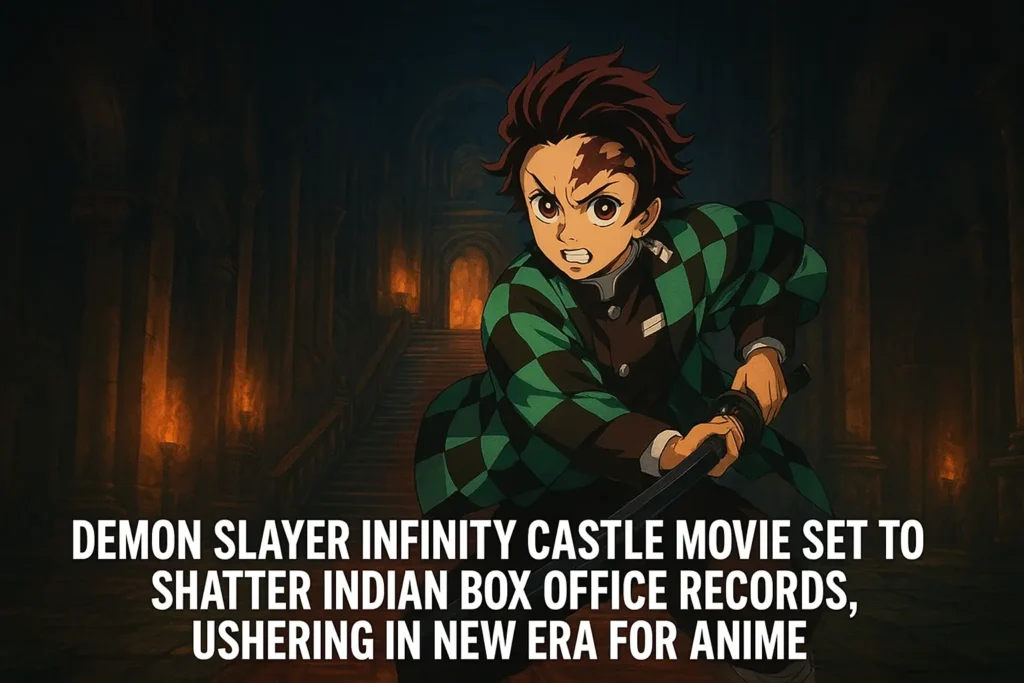The latest Demon Slayer movie is arriving with the kind of anticipation that turns a strong opening into a cultural moment. Advance chatter, fan mobilizations, and exhibitor confidence suggest an opening frame that could outpace previous benchmarks for Japanese animation in India. What’s different this time isn’t just the size of the fandom—it’s how mature and distributed that fandom has become, stretching from core metros to fast-growing tier-2 hubs and university towns. The result is a market primed for a breakout that does more than post a big weekend—it resets expectations for anime at the Indian box office.
From Cult Favorite to Mainstream Contender
Anime screenings in India have steadily evolved from limited, late-night events to primetime theatrical fixtures. Nezuko Demon Slayer: Kimetsu No Yaiba sits at the center of this shift, with a franchise identity that blends shonen spectacle, accessible storytelling, and polished production values. Audiences already know what they’re buying—a premium theatrical experience with immaculate fight choreography, emotionally resonant arcs, and world-class sound design. As more casual viewers sample anime through streaming and social platforms, they’re arriving in cinemas with a baseline familiarity that used to take years to build.
Why This Release Is Built for Scale?
A perfect storm of factors is fueling demand. First, timing: a quieter stretch for major domestic festival titles and a window that lets a fan-driven film hold premium screens across multiple shows. Second, formatting: widespread availability of subtitled and dubbed versions reduces friction for first-time anime viewers. Third, showtime density: early morning and late-night slots cater to enthusiasts, while peak shows capture general audiences, turning fandom energy into full-day occupancy. When you add collectible ticketing, standees, and themed concessions, you get the kind of experiential loop that accelerates word of mouth.
Pre-Release Momentum and the Power of Community
Fan clubs, campus societies, and creator communities have been operating like micro-distributors—coordinating meetups, driving bulk bookings, and sustaining a constant drip of short-form content. Trailer breakdowns, character primers, and “first-watch etiquette” videos have lowered the barrier to entry for newcomers while stoking hype among loyalists. That grassroots machinery often matters more than conventional TV spots for a title like this: it converts attention into action quickly, especially in the first 72 hours when momentum is most volatile.
The Crossover Moment: Beyond the Core Anime Demographic
What makes this release pivotal is the potential to reach viewers who don’t self-identify as anime fans. Demon Slayer’s themes—sibling bonds, resilience, moral clarity—travel well beyond genre boundaries. The franchise’s visual identity also reads instantly on social: iconic masks, breathing styles, and elemental combat create GIF-ready sequences that move across platforms and languages. If families and date-night audiences join opening-weekend crowds, the film’s ceiling climbs from “franchise record” to “genuine outlier.”
Exhibitor Strategy: Confidence You Can Measure
Indian exhibitors are treating this film like a marquee import, not a niche booking. Multi-show dayparts, early access fan screenings, and quick-turn showtime expansions are all on the table. Expect aggressive placement in high-utilization corridors—IT parks, college clusters, and malls with proven weekday footfall. The operational logic is clear: anime fans show up early and often, but the long tail belongs to casuals. Packing both cohorts into the schedule is how records fall.
Marketing Flywheel: From Teasers to Theater Selfies
The marketing cadence has mirrored mainstream film rollouts—teaser drops, poster reveals, and creator collabs—while leaning into community-first tactics. Influencer-led explainers turn lore into on-ramps; cosplay meetups transform foyers into content studios; and theater selfies act as social proof for fence-sitters. The flywheel is simple: buzz begets bookings, bookings beget more buzz, and the cycle compresses into a single high-energy weekend that can rival conventional blockbusters on an admissions basis.
What a Record-Breaking Run Would Mean for India’s Anime Economy?
A landmark gross won’t just be a trophy—it’ll be a signal. For distributors, it de-risks wider anime slates and quicker turnarounds between overseas and Indian releases. For exhibitors, it justifies persistent premium-format allocation and better showtime density for future titles. For local licensors and merch partners, it opens a pathway for official collectibles, apparel, and event experiences that have historically operated in a grey zone. Most importantly, it validates an audience that has long been enthusiastic but under-served at the cinema.
The Bottom Line
If the early signals convert into sustained turnout, the Demon Slayer infinity castle movie won’t just rewrite the hierarchy of anime releases in India—it will redraft how the industry programs, markets, and merchandises Japanese animation for the big screen. This is more than a fandom victory lap; it’s a proof-of-concept for anime as a reliable, repeatable pillar of the Indian theatrical calendar. The stage is set. The screens are ready. And the first weekend may be the moment India’s anime era decisively begins.

